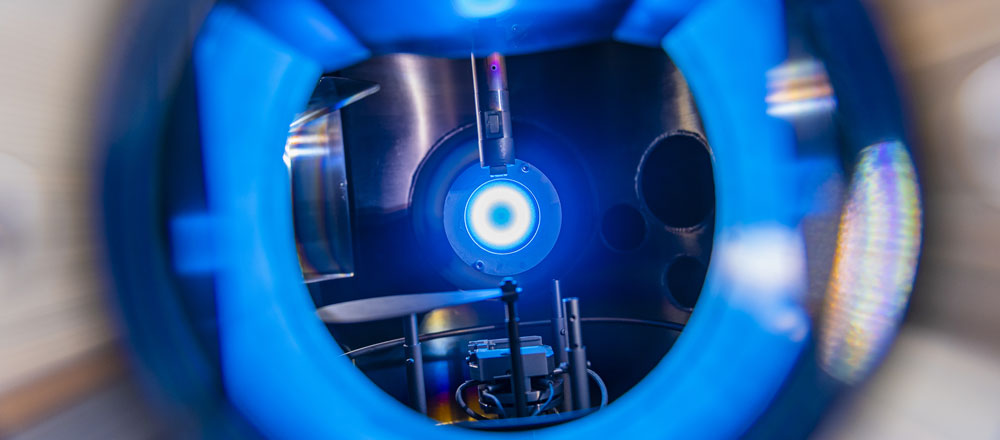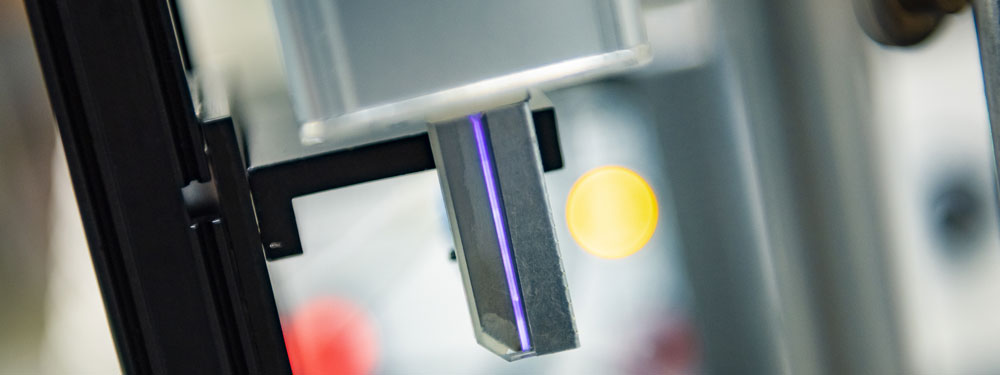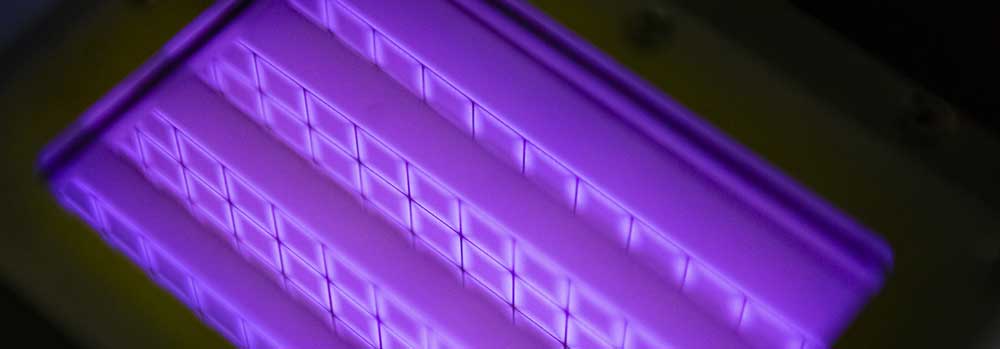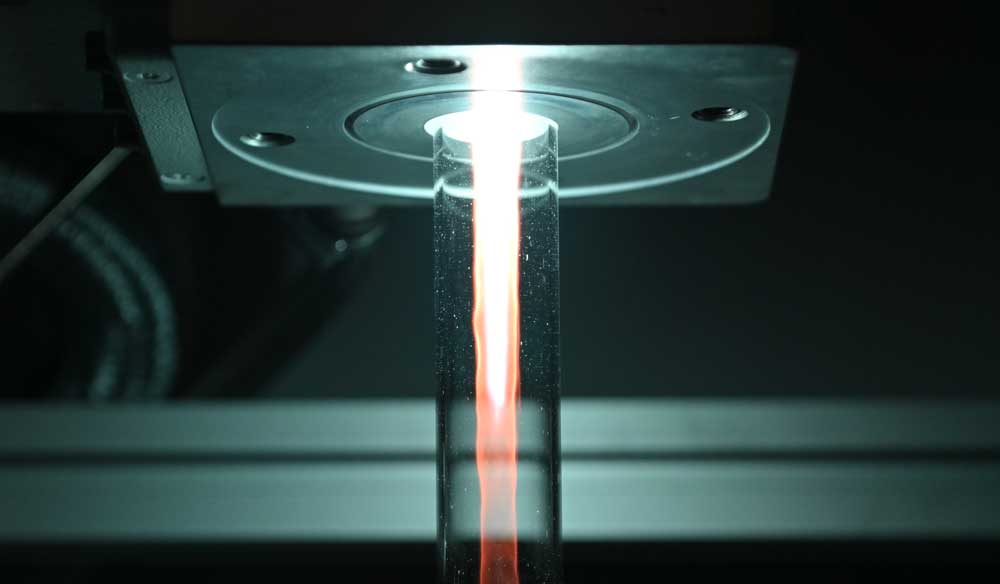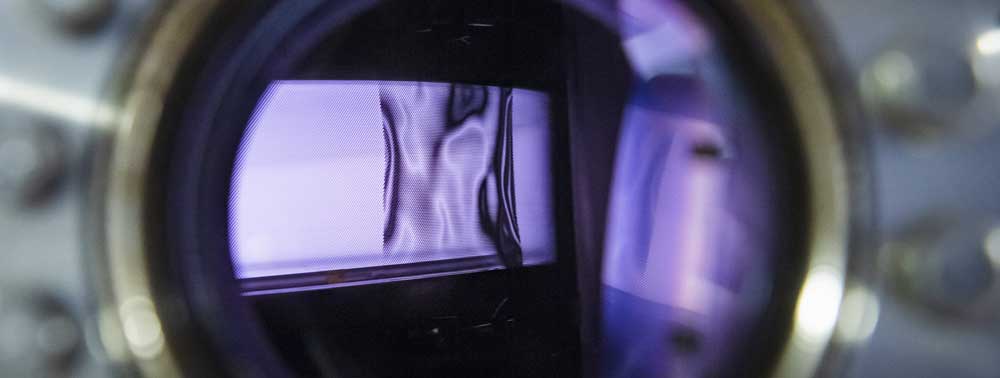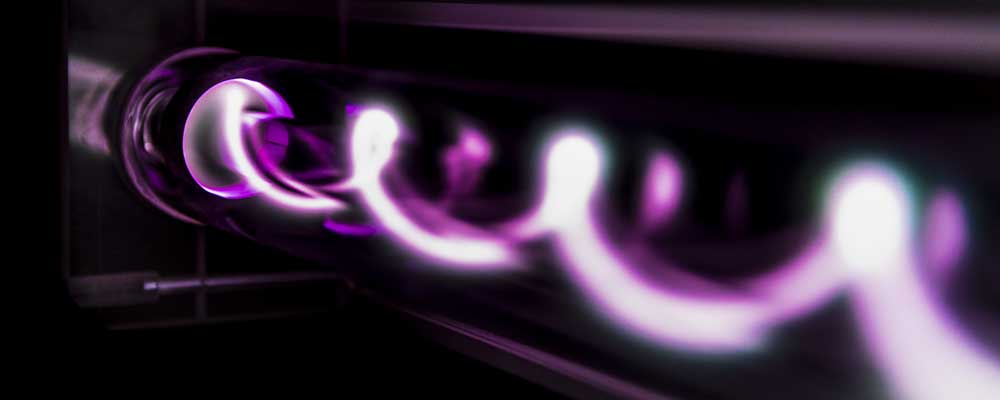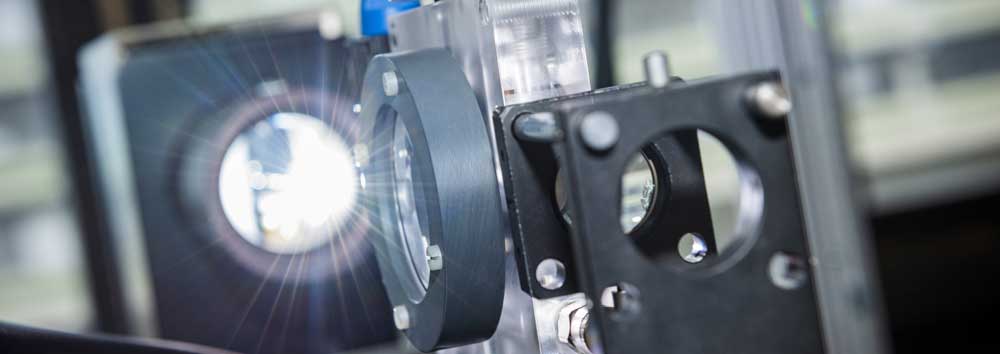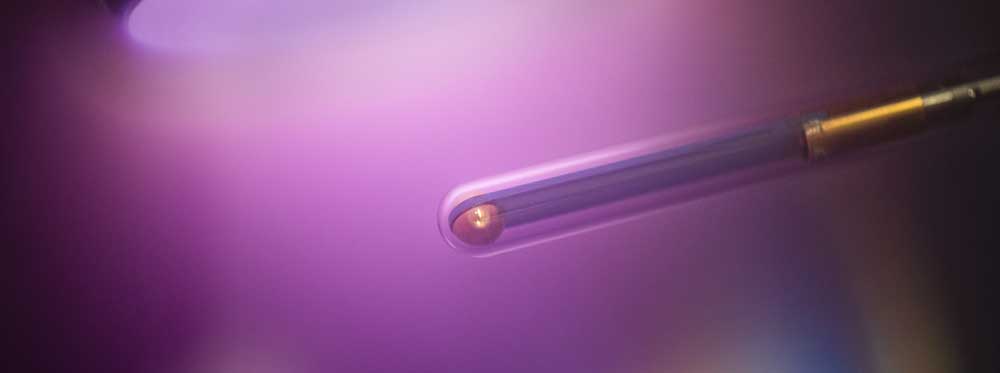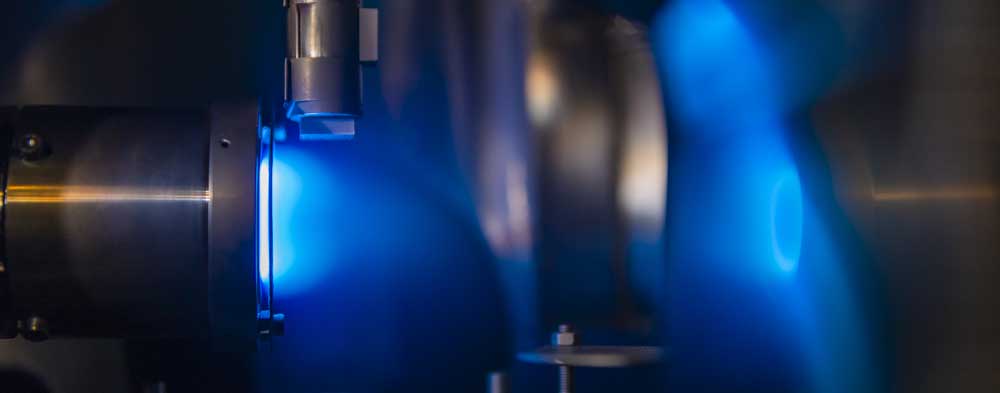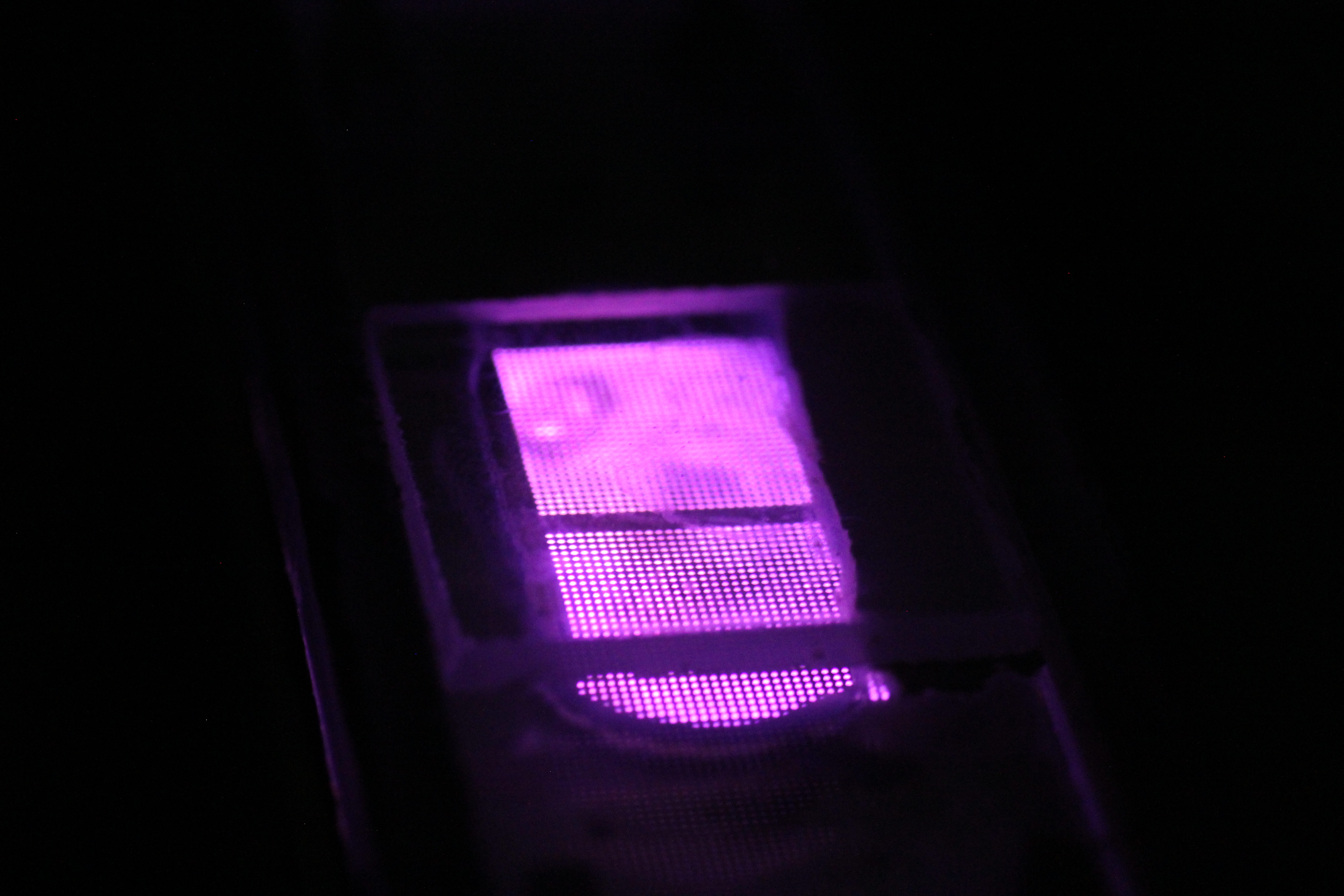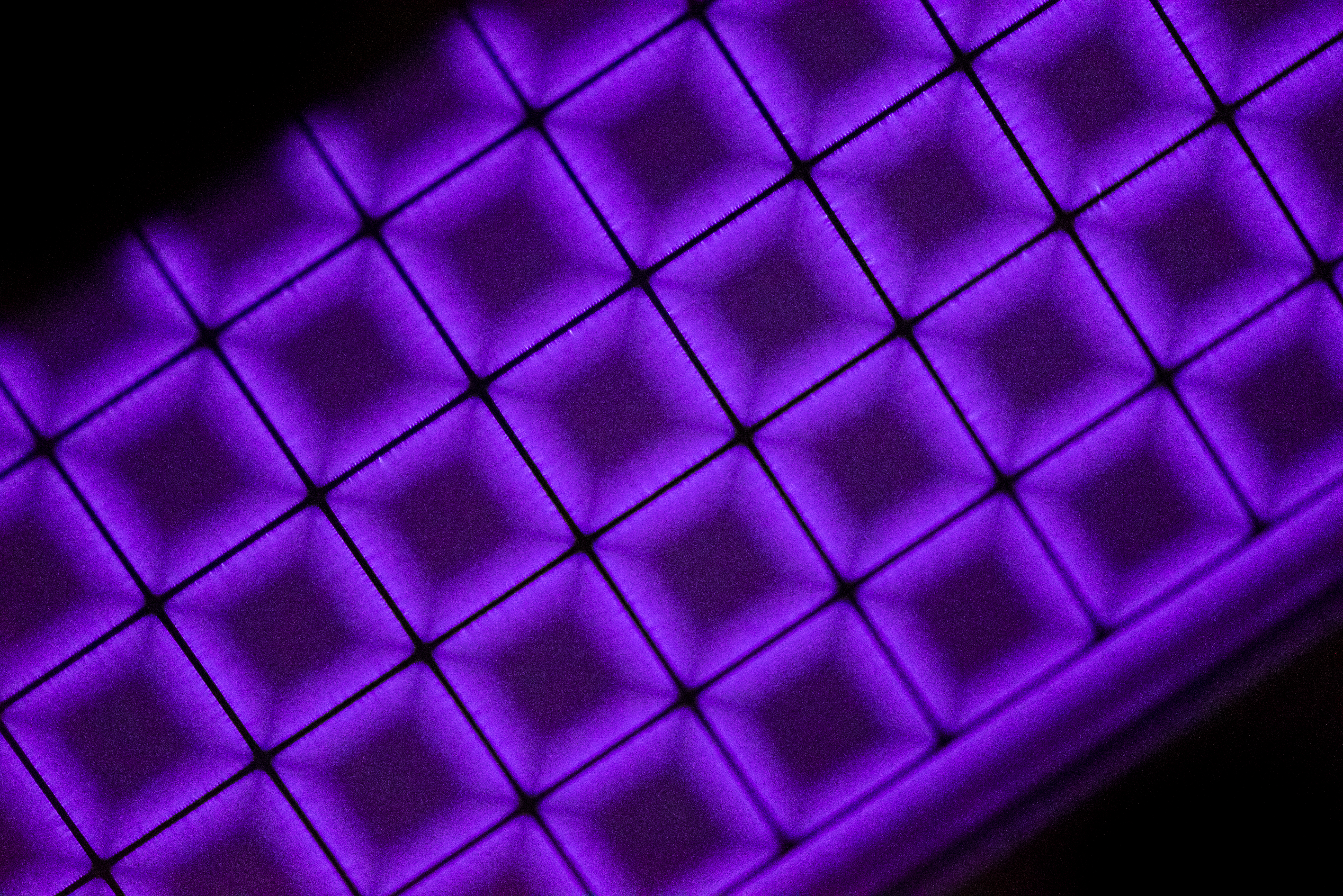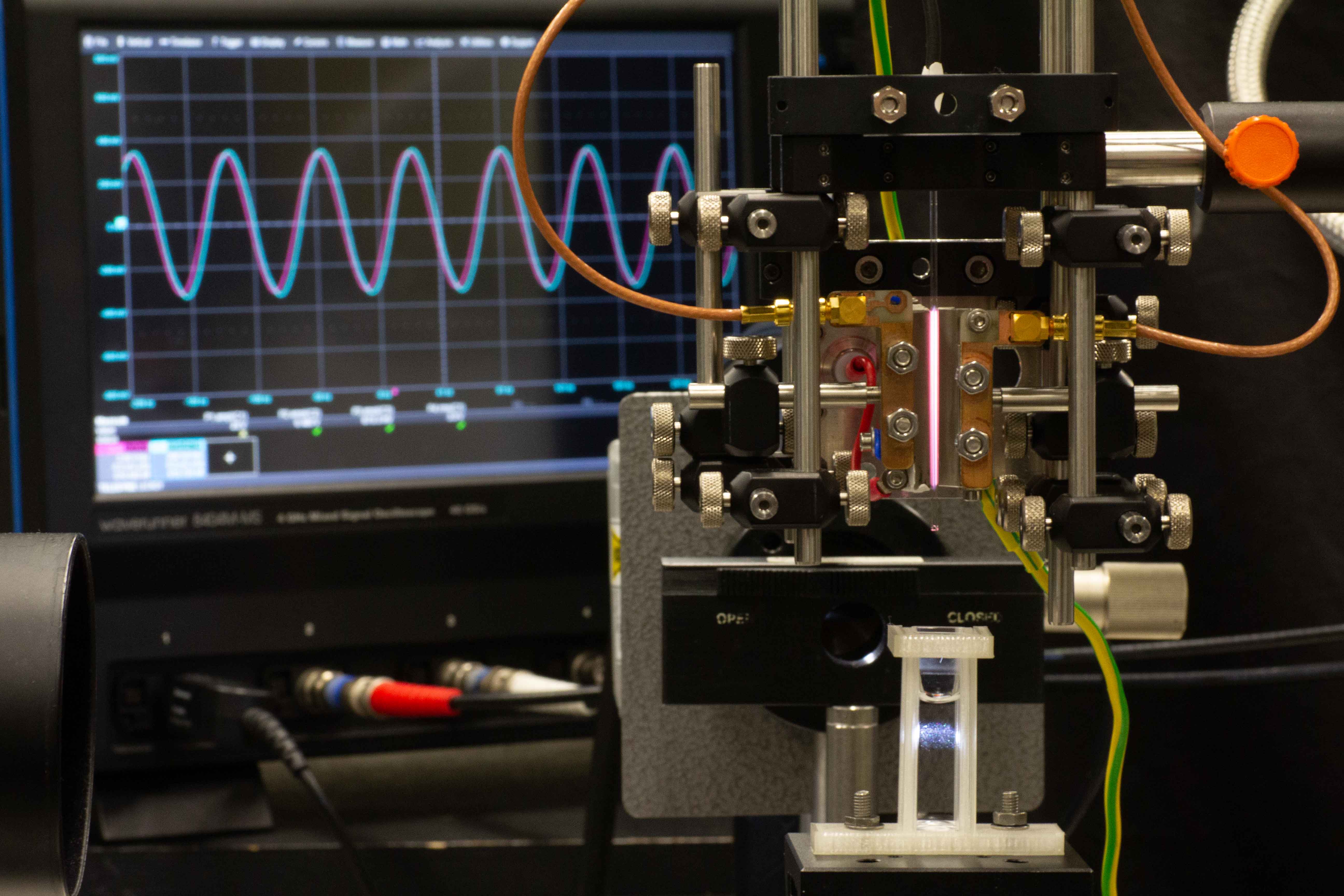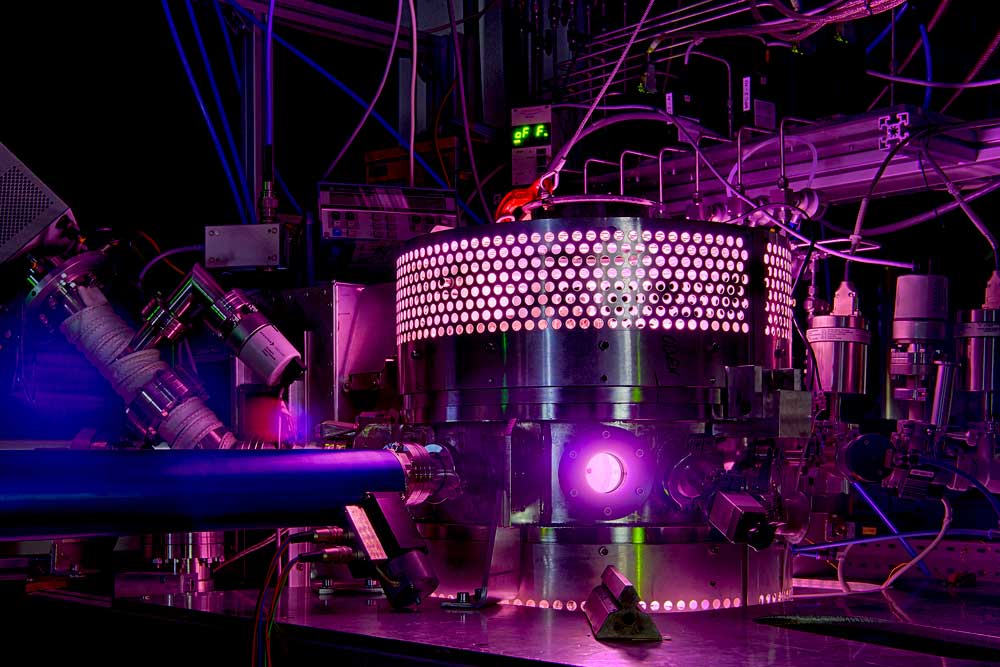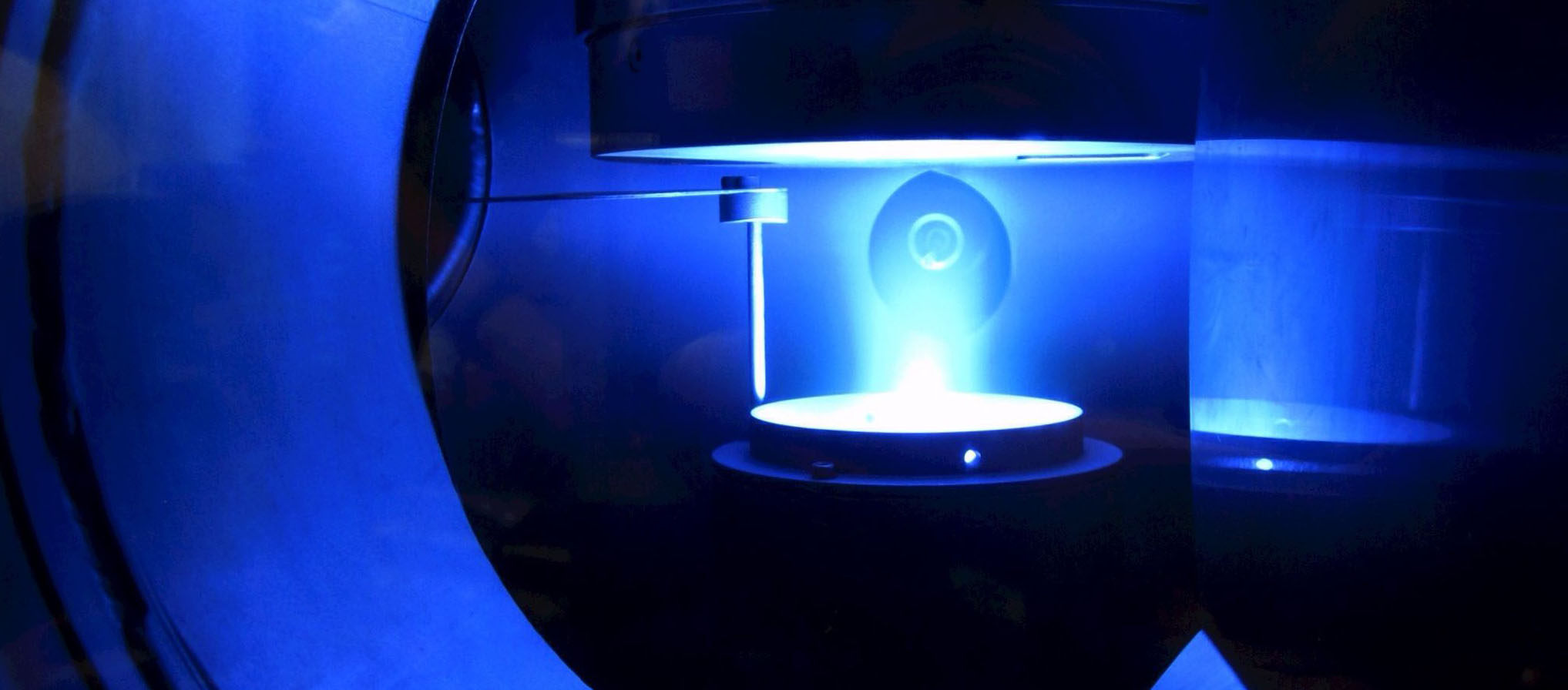Prof. Dr. Uwe Czarnetzki, Chair of Experimental Physics V
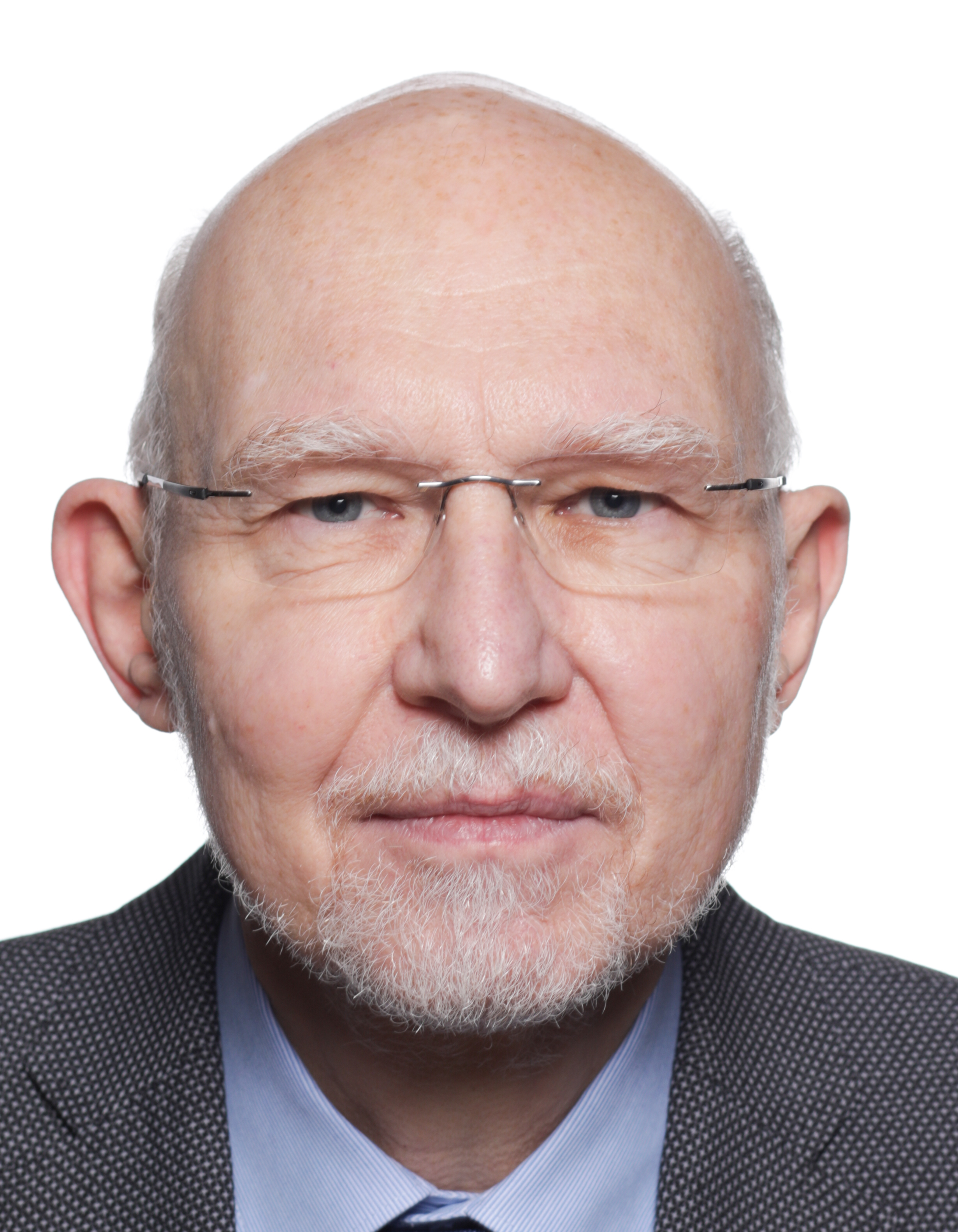 Low-temperature plasmas with electron temperatures in the range of a couple of eV are generally the topic of our research where we ask basic questions like these: How are electromagnetic fields coupled to the plasma? How do the electrons gain energy? How does the transport of charged particles work? What is the structure of the plasma and the plasma generated fields? What kind of collisional processes are important for transport and energy loss? The aim of our investigation is to understand the physics of these ionized systems. This requires well-designed plasma sources, which produce stable and reproducible plasmas, as well as advanced diagnostics. The most obvi-ous might be current and voltage measurements and various kinds of emission spectroscopic techniques - but even these diagnostics can be quite challenging on ns or even sub-ns time-scales. Further, charged particle detec-tion using probes or analyzers are essential for determining distribution functions. A particular strength of the group is in use and development of advanced laser diagnostic techniques, with lasers ranging from fs to cw opera-tion and wavelengths from the UV to the IR. Typically, a larger number of diagnostics is applied to a single type of plasma in order to obtain information on the most relevant key parameters. Since measurements alone are never sufficient to gain understanding of the physics, we also work on developing analytical models and often combine these with simulations. However, in most cases simulations are carried out in collaboration with colleagues who have specialized in this field. In any case, it is this triangle of experimental data, analytical models, and simula-tions, which is most successful in gaining insight on the physics.
Low-temperature plasmas with electron temperatures in the range of a couple of eV are generally the topic of our research where we ask basic questions like these: How are electromagnetic fields coupled to the plasma? How do the electrons gain energy? How does the transport of charged particles work? What is the structure of the plasma and the plasma generated fields? What kind of collisional processes are important for transport and energy loss? The aim of our investigation is to understand the physics of these ionized systems. This requires well-designed plasma sources, which produce stable and reproducible plasmas, as well as advanced diagnostics. The most obvi-ous might be current and voltage measurements and various kinds of emission spectroscopic techniques - but even these diagnostics can be quite challenging on ns or even sub-ns time-scales. Further, charged particle detec-tion using probes or analyzers are essential for determining distribution functions. A particular strength of the group is in use and development of advanced laser diagnostic techniques, with lasers ranging from fs to cw opera-tion and wavelengths from the UV to the IR. Typically, a larger number of diagnostics is applied to a single type of plasma in order to obtain information on the most relevant key parameters. Since measurements alone are never sufficient to gain understanding of the physics, we also work on developing analytical models and often combine these with simulations. However, in most cases simulations are carried out in collaboration with colleagues who have specialized in this field. In any case, it is this triangle of experimental data, analytical models, and simula-tions, which is most successful in gaining insight on the physics.
Keywords: Plasma physics, Plasma diagnostic, Plasma modelling, Low pressure plasmas, Atmospherics pressure plasmas
Webpage: Experimental Physics V
ORCID: 0000-0002-5823-1501
